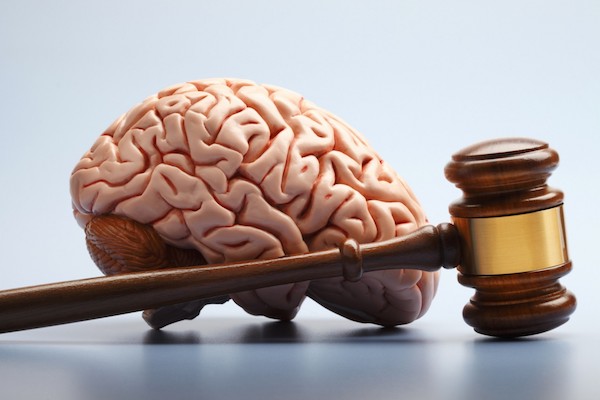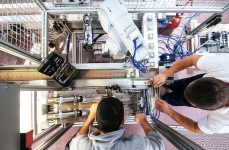Published on the 01/09/2022 | Written by Heather Wright

Would you have an implant so you could do your job better?…
Forget billable hours, lawyers, and other professionals, could eventually charge clients by ‘units of attention’.
At least that’s one premise explored in a new report on neurotechnology by University of Sydney Law School criminal law scholar Dr Allan McCay, and commissioned by the Law Society of England and Wales.
“We have an overall picture of an emerging technology that has considerable promise for further development”
Implants are already being used to stimulate the brains of Parkinson’s and epilepsy patients, but McCay says its applications go way beyond the medical arena – and raise plenty of questions about the legal implications of technologies which interact with the brain.
McCay says the technology could potentially be used for cognitive enhancement, creating a divide between enhanced and non-enhanced humans.
Neurotechnology to stimulate the brain could improve cognitive performance, enabling lawyers, for example, to scan documents more quickly and provide comparisons with precedents and background material more effectively.
It’s that area of cognitive enhancement where Elon Musk says his neurotech company, Neuralink, is working, developing implants that could be used to enhance cognitive abilities. (Of course, Musk also claimed back in 2019 that Neuralink would have chips in human skulls by 2020. Instead we were treated to a video of a monkey appearing to play Pong using wireless implants in its head.)
The report suggests chip-enabled lawyers could potentially scan documents in a fraction of the time, reducing the need for large teams of legal researchers at a time when skyrocketing hourly billing rates for legal advice is a concern.
“If it were possible to augment one’s cognitive capacity in order proceed more quickly and effectively through legal work, and make partner more quickly, some might be minded to opt for an upgrade,” the Neurotechnology, Law and the Legal Profession report notes.
“This might be particularly so if one’s colleagues were augmenting their capacities, or one was on the receiving end of pressure from clients to work more efficiently.”
The technology could also be used to monitor workplaces, in gaming or as a means of interacting with the metaverse, or used by the military – creating cyborg super-soldiers – the report notes.
Darpa in the US has long been working to create ‘cyborg soldiers’, including attempting to use neural implants to enable the human brain to communicate directly with computers.
And just to be clear, neurotechnologies – technologies that interact directly with the brain or more broadly the nervous system by monitoring and recording activity and/or acting to influence it – doesn’t just mean chip implants. It can also take the form of headsets, wristbands or helmets.
The report also delves into the use of the technology for the brain monitoring of criminal offenders and raises questions about the potential for hacking and whether thoughts could become criminal acts if they lead to a physical crime, but that’s a whole different story.
For the business sector, McCay notes that some devices purport to give an indication of how much attention someone is paying, raising the prospect of charging for attention units – and only paying when a lawyer, or other professional, is paying attention.
“People need to acquire new knowledge and skills in the workplace and some of the technology described with respect to military and educational affairs could be used in other workplaces to assist with job training,” the report says.
“However, there might be other reasons to use neurotechnology in the workplace. Perhaps workplace performance might in some situations be improved by the monitoring of cognitive states such as alertness for example in the case of air traffic controllers and some companies are offering neurotechnological solutions for improving productivity by giving employers the opportunity to monitor the attention and stress levels of employees.
“Whereas the possibility of downloading new skills is not a current option, workplace brain-monitoring is, and it is not hard to imagine that some of this technology might generate disquiet and questions of employment law.”
It’s also a technology that raises the prospect of a new ‘digital divide’ between those who have the technology and can pay attention and perform their job better, and those that don’t, McCay notes.
The report also questions whether the large amounts of brain data collected could put people at risk of surveillance or manipulation and destroy mental privacy.
Says McCay: “This tech is coming, and we need to think about regulation now.
“Action is needed now as there are significant neurotech investors such as Elon Musk and Meta (Facebook). We need law reform bodies, policy makers and academics to be scrutinising these technological advances rather than waiting for problems to emerge.”
Chile has already introduced the Neuroprotection Bill to protect its citizens from neuro technologies and other countries, such as Spain are – slowly – starting to look at the issue.
Others are advocating for legal frameworks to be implemented at an international level, and in 2019 the OECD issued a formal recommendation that governments, companies and researchers pay greater attention to governance of the technology, saying it raised ‘a range of unique ethical, legal and societal questions’.
“We have an overall picture of an emerging technology that currently has some important medical uses, but considerable promise for further development,” the report says.
“The technology has started to take some tentative steps towards a consumer market (for example in relation to video gaming) and has some limited application in the workplace in relation to workplace safety and productivity.
“It seems to be a technological trend that is in its early stages, but given the rate of technological progress and interest both from the private sector and the military, one can expect the trend towards the uptake of neurotechnology to continue and gain pace leading to new medical, educational, workplace, consumer, military and perhaps criminal justice applications.”



























